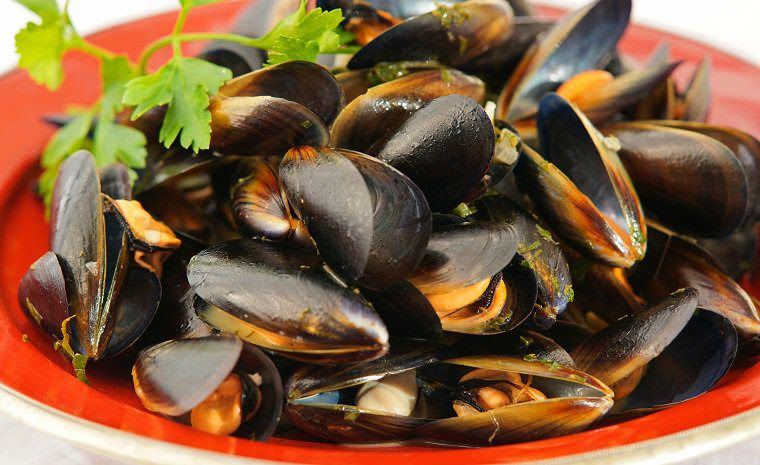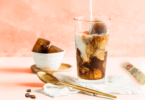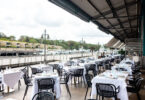‘Cockles and Mussels alive, alive-o’, the traditional call of shellfish sellers as they wheeled their barrows through the markets, reminds us that cockles, along with oysters, mussels, and other bivalves, were once an inexpensive snack for Britain’s working class.
Bivalve molluscs are any shellfish with a double-hinged shell, which means a huge number of delicious Australian-harvested species come into this category. Some of our country’s most popular species (like oysters, scallops, and mussels) are bivalves, but the moniker also refers to some lesser-known (and just as tasty) species like Surf Clams, Cockles, Pipis, and Vongole.
We have pulled together our top tips for purchasing, preparing, cooking, and eating this special category of delicious seafood species, so you feel more comfortable giving them a try at home!
Purchasing 
Clams, Cockles and Pipis are all sold live. Look for brightly coloured, intact, lustrous shells, that are closed or close when tapped or gently squeezed, and a pleasant fresh sea smell. Due to their sandy habitat, they can sometimes contain a bit of grit; ask your fishmonger if they have been purged (stored in aerated saltwater for at least 24 hours to eliminate sand), if they haven’t, we have purging instructions on our website.
Scallops come in two main varieties in Australia: Commercial and Saucer. Commercial Scallops are available both farmed and wild-caught. They have more of a traditional ‘scalloped’ look and are sold with the creamy orange roe attached. Saucer Scallops are sold with the roe removed, with a darker colour around their outside edge.
Scallops are usually sold either as meat (by the kilo) or on the half shell (by the piece). Look for firm, intact, lustrous flesh and shells, with a pleasant fresh sea smell. Raw scallop meat should be translucent and slightly ‘sticky’ indicating that it is ‘dry’. This is a good indication that it hasn’t been frozen or stored in water.
Mussels are found in intertidal waters to depths of around 20m, often in dense clumps, attached by coarse rope-like ‘beards’ to exposed reefs, rocks, and jetty pylons. While they were traditionally harvested by divers, aquaculture has developed to the point that almost all mussels sold are now farmed.
They are sold live, sometimes in vacuum-sealed packages. Look for brightly coloured, firm, intact, lustrous shells that are closed or close when tapped or gently squeezed, and a pleasant fresh sea smell.
Oysters are many people’s favourite bivalves, and in Australia, you can find three different varieties: Pacific, Sydney Rock, and Native (Angasi). Your favourite type is pretty much down to personal preference: they are all delicious in different ways. Oysters are generally sold by the dozen or half-dozen, already shucked (opened). Look for lustrous, plump, moist flesh with a pleasant fresh sea smell.
Preparing
One of the best parts about cooking with bivalves is that they don’t need much preparation at all!
Clams and the like will most often come pre-purged (soaked to remove sand) and expertly cleaned. The most you will have to do is lightly scrub the outsides of your mussels to remove any sediment you see, but usually, this has already been done by your fishmonger.
Cooking
Bivalves all lend themselves to a wide range of cooking styles, including steaming, poaching, stir-frying, baking, grilling, barbecuing (in the shell), smoking, and pickling; and, when very fresh, they’re great served raw (sashimi). The firm flesh works particularly well in soups, curries and stir-fries.
Due to their biological similarities, Vongole, Pipis and other clams can be substituted for one another in many recipes, and are often a good substitute for Blue Mussels.
Soups 
Remember that bivalves need very little cooking and are ready virtually as soon as the shell opens. When cooking a large batch, it’s best to remove the individual shells from the pan as each one opens, so as not to overcook them.
Recipe Inspiration: Bouillabaisse
Steaming
This is perhaps the second most common way to cook species like mussels and clams, but is also a great way to gently cook scallops. Steaming cooks gently, while allowing flavour to permeate throughout the seafood.
Recipe Inspiration: Mussels in White Wine
Baking & Stir-Frying
There is a huge range of methods in this category, but these higher-heat cooking styles definitely suit scallops the best.
And don’t forget the classic Pipis in XO sauce!
Recipe Inspiration: Scallop Mornay
Sashimi
Many bivalves can be eaten as sashimi, provided they are extremely fresh. If you love Kingfish sashimi, we highly recommend trying scallops in this style.
And, of course, the way most Aussies eat oysters puts them in this category too! Try these two oyster dressings to elevate your experience.
Recipe Inspiration: Oysters with Asian Dressing
Bivalve molluscs are any shellfish with a double hinged shell, many of which are commonly referred to as clams… ‘Clam’ once meant ‘shut’, and these creatures can shut their shells tightly to protect themselves from predators.
Today we’re sharing four tasty ways to cook with bivalves, all of which can easily be achieved at home!


















